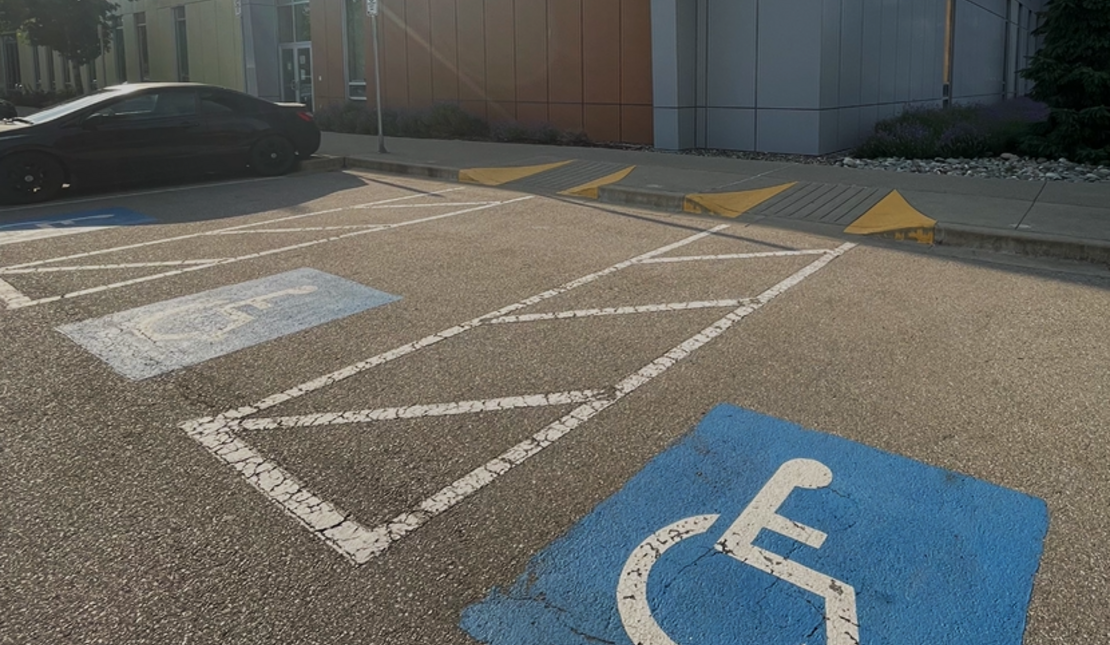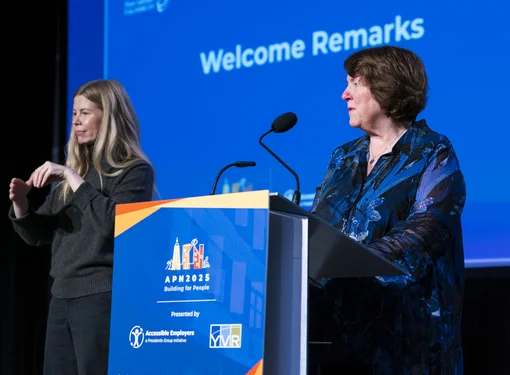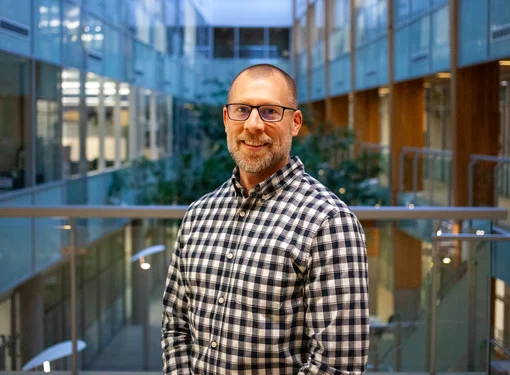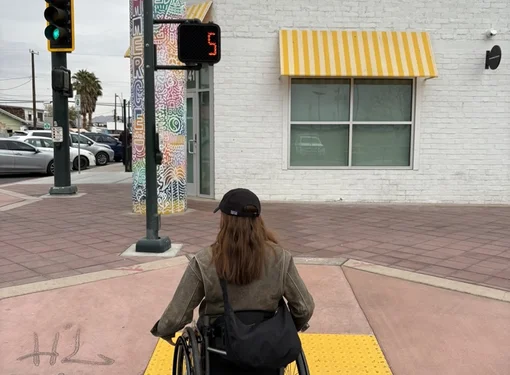Our Perspectives From Taking RHFAC Professional Training
Two members of the Rick Hansen Foundation Marketing Communications team, Katie Kirker and Rebecca Blissett recently had the opportunity to take Rick Hansen Foundation Accessibility Certification™ (RHFAC) Professional Training. This is what they had to say about it:
RHFAC Professional Training Experiences: Katie Kirker
As a writer, my job is to tell stories authentically and in an engaging way.
You wouldn’t think that as a writer there is much use in taking a course on the technical nature of accessibility in the built environment, but I found the course to improve my writing and my ability to write about access and inclusion and formulate stronger and more authentic storytelling.
Connection to Others
One of the aspects of being a journalist and writer is the ability to meet people from very different backgrounds and hear their stories. Connecting with others is something I really value and being able to tell their stories is a privilege.
By taking RHFAC Professional Training, I was able to work for ten weeks with a group of individuals who were all very different but had one shared goal – to learn more about access in the built environment.
On the first day of class, we all introduced ourselves and discussed our motivations for taking the course and what we hoped to get out of it. What struck me was the wide range of individuals seeking to learn more and create a more accessible world. Throughout the course, I had the opportunity to learn from these people, their own lived experiences, and apply that to the work we were doing. By connecting with others, I was able to connect some of the technical concepts to real life examples that my peers had encountered, which helped make them come alive for me.
The combination of hearing diverse stories of the individuals in our class, alongside the voices of those with lived experience that are embedded in the course material itself, brings a vibrancy to technical content that, for me, enhanced and deepened my understanding.
By hearing how these different perspectives experience something, I can then adapt the way I communicate that resonates with the audience in a more meaningful way.
Understanding Terms
One of the reasons I got into journalism was because I noticed a gap in how policy was communicated to those who it impacted most. Policy is often jargon laden and confusing, and I wanted to help communicate it in a more accessible way. That is how my journalism career began, and this passion for knowledge translation has followed me to this role as a writer at RHF.
While courses such as RHFAC Professional Training include terms that architects, engineers and other built environment professionals would take to quickly, as a writer I have less depth in this area, despite my background in policy.
Through the supportive working environment and collaboration with my peers and instructor, Pat Short, I was able to understand the terms and acronyms and gain a deeper understanding on how we can incorporate access in the built environment. The supportive environment allowed me to ask questions and take the time to learn about all the terms that describe the built environment.
I have been able to take the terms and explain them in my writing so that others can also understand. For example, if I am interviewing someone who is an architect, they may say ‘TWSI’s’, which for them is common language, but for me is unfamiliar. Through RHFAC Professional Training, I now know that this means ‘tactile walking surface indicator’ and I can explain that in the piece, so others know what it is as well.
RHFAC Professional Training Experiences: Rebecca Blissett
I jumped at the opportunity to take RHFAC Professional Training. Ever since I joined the team at the Rick Hansen Foundation, accessibility has been part of my mantra. However, I lived it long before I realized it.
As someone who is hard of hearing and often finds myself overwhelmed by the cacophony in many public spaces (oh, breweries, why must you be built to resemble steel echo chambers), I figured this was just my lot in life. I never imagined how straightforward it could be to improve environments, especially regarding sound quality for people like me (and believe me, many of us are out there). Accessibility is not just about sticking a ramp on a building. It is about intelligent and creative design that benefits everyone.
I’ve been writing about RHFAC for years, from year-end reports to highlighting sites that achieve Gold ratings, to the Professionals who rate sites, and to attending the fantastic Accessibility Professional Network’s annual conference (if you have any interest in future of the building industry, I highly recommend you attending this engaging and incredibly informative conference).
However, taking RHFAC Training allowed me to peek under the hood, so to speak, and gave me a fresh perspective on how accessibility ratings are conducted and the reasoning behind specifications.
Using Your Senses
Pat Short at Vancouver Community College taught my course. It was online, except for two field visits to rate sites – one with the guidance of Pat and one solo. I was initially worried about the online aspect, but the course is so well-designed and intuitive that those worries quickly vanished. As did my imposter syndrome. My background is journalism – writing and photography – worlds away from engineering and architecture. But Pat’s enthusiasm and reassurance were infectious. Plus, having the insights provided by people with disabilities through the stories I tell – plus my own hearing loss – does give me a unique understanding of the difference between feeling included and excluded.
What struck me about RHFAC is its holistic approach. In the course, I experienced how much it relies on logic and common sense. Utilizing those skills and my new-found knowledge, I was pleasantly surprised by how much I knew while rating a community centre’s exterior and pathways. I found a new lens through which to view something as innocuous as a parking lot – why it’s important to have wide accessible parking stalls near an entrance with enough space to load and unload devices as needed; why it’s important not to have a busy drop-off area directly behind those spaces; and why it’s important to have a crosswalk that doesn’t lead to a set of stairs and nothing else.
RHFAC drove home the difference between knowledge and building codes—or, in some cases, knowledge and winging it.
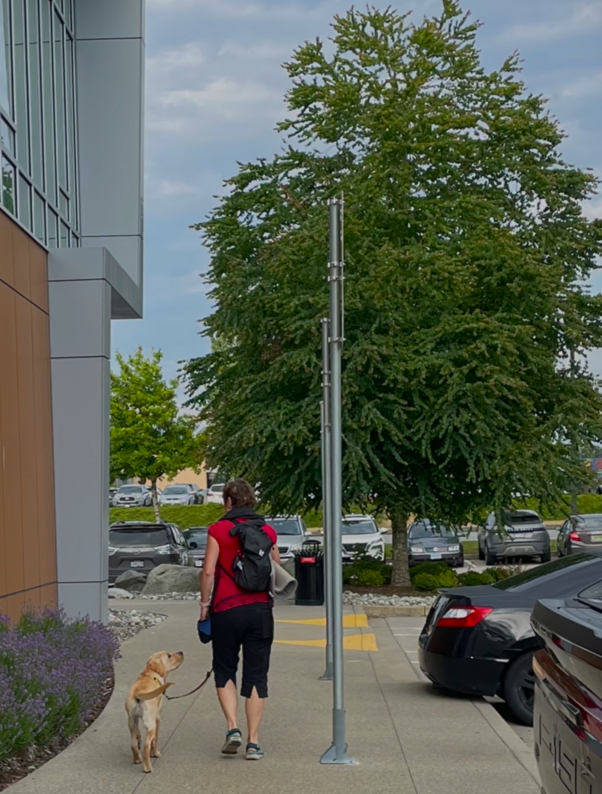
Consistency is Key
When done right, accessibility blends seamlessly into the environment. That’s why people must be educated on providing meaningful and consistent access from site to site and province to province. It removes the anxiety of unexpected obstacles, which can often be dangerous.
And once you understand accessibility, you can never ignore it. I hope this cultural shift reaches a point when I can have a night out where the sound is as inviting as my company.
Interested in learning more about RHFAC Professional Training? Visit our web page for more information.
